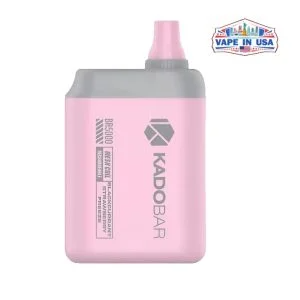You might think writing books for young readers and children is simple, picturing a glossy pile of lively book covers. Well, it is not that simple!
Crafting a children’s writing book involves a distinct process compared to other forms of writing. After all, books for these young readers must be written with the genre and age in mind. Besides, you must consider the ages of your main character and its friends. You must also focus on the proper plot and theme for the narrative!
Working on getting achildren’s writing book requires brainstorming ideas and thoughts to get started. This is a vital step in the artistic process!
You need a clear and concise plan that outlines how each step of crafting a children’s writing book simplifies the process.
In this article!
Let us explore the basics of crafting a children’s writing book and getting it published in this article. Let us also learn valuable techniques for crafting unique books for young readers.
Working on a book for young readers!
It can be tricky pleasing children. After all, they are a more complex target market than it seems!
Focus on an age range!
While this may differ, slot your book into age groups. Consider the age group you wish to write for. Next, you can research to decide the age group of your children’s writing book.
You must review the layouts and language used for books for diverse age groups and find what differentiates them. Study the use of syllables and themes for your desired age group.
You can also find and read books that appeal to you for motivation and inspiration. In addition, you can grasp and mimic their success factors to craft success for your children’s writing book!
Find an idea that piques young readers!
Knowing your readers before you brainstorm ideas for your book is vital. This will help you recognize what may work for a children’s writing book.
Write in the way children like to read!
Children are different today. They are more innovative and know what they prefer reading. Thus, you must study what children in your target age group like reading and their preferred styles. This will help you target the right genres and themes!
Write a book that also appeals to adults!
Your book must also appeal to adults, as they are the ones who mostly purchase books. You can test out the book on adults and see if they think your idea would make a great book for their children!
Assess the book’s flow and length!
You must adapt your writing style to the age range of your target readers. The font must also be large enough for parents to view and read from a distance.
The length of your book is also vital, as bedtime stories must be long enough to create a story but not too lengthy to lose momentum.
Maintain an exciting pace for the story!
When crafting a children’s writing book, focus on a quick-paced and gripping narrative. You must ensure that the story advances at a speedy pace to keep young readers excited!
An ideal technique is to use short and brief sentences for your story. Children require less time to read smaller sentences. As a result, you can better grasp and retain their attention!
Write with illustrators in mind!
Young readers love pictures. Hence, the best books have lots of pictures and illustrations!
Your children’s writing book must have enough material for an illustrator to elevate the story. You must describe the theme, plot, and characters well enough so that they can imagine and draw what the story looks like in pictures.
You can also choose unique characters or appealing visuals that attract attention from young readers. When laying out your tale, break the words like a storyboard. This will help you write each section and identify the proper illustration to boost appeal!
Edit and re-edit your book!
You must know the value of editing when you craft your children’s writing book and go through the process. After all, editing is vital for a polished, error-free book that appeals to readers!
You must edit your book for grammar, spelling, and sentence flow. You can also seek skilled editors to proofread your story. A different set of eyes can greatly help!
Skilled editors are used to editing books for young readers and can spot errors. Even if you think your book is perfect, seeking experts to review it can make a huge difference!
Test it with children in your target market!
You can try reading your book to children in your target market to gauge their engagement level. This will also help you assess if they ask questions beyond the book’s story.
Plan your book’s marketing campaign!
Every good book must be promoted to boost prominence among target readers. Thus, you must focus on a solid marketing plan for your book. Consider diverse approaches to venture into distinct sales markets for your book.
Is your children’s book ready to be published?
So, how do you know when your children’s writing book is ready? You can start with a few simple questions. Does your book have the right opening, middle, and end? Are the characters striking and appealing? Are there any problems with the writing that you want to sort out?
You can also seek feedback on your script from other bookwriters. Besides, you can narrate your story to young adults and ask if they would be piqued to read it!
If you encounter major concerns in the feedback from people after they read your book, you must focus on fixing them before moving on to publication. However, if people agree that your script is ready for readers, you must move on to publishing right away!
Wrapping it up!
It can be easy working on crafting a children’s writing book. Besides, with the growing acceptance of self-published books, you need a unique idea and artistic expression to execute it. So, wait no longer and follow our guide to start working on your book today!











